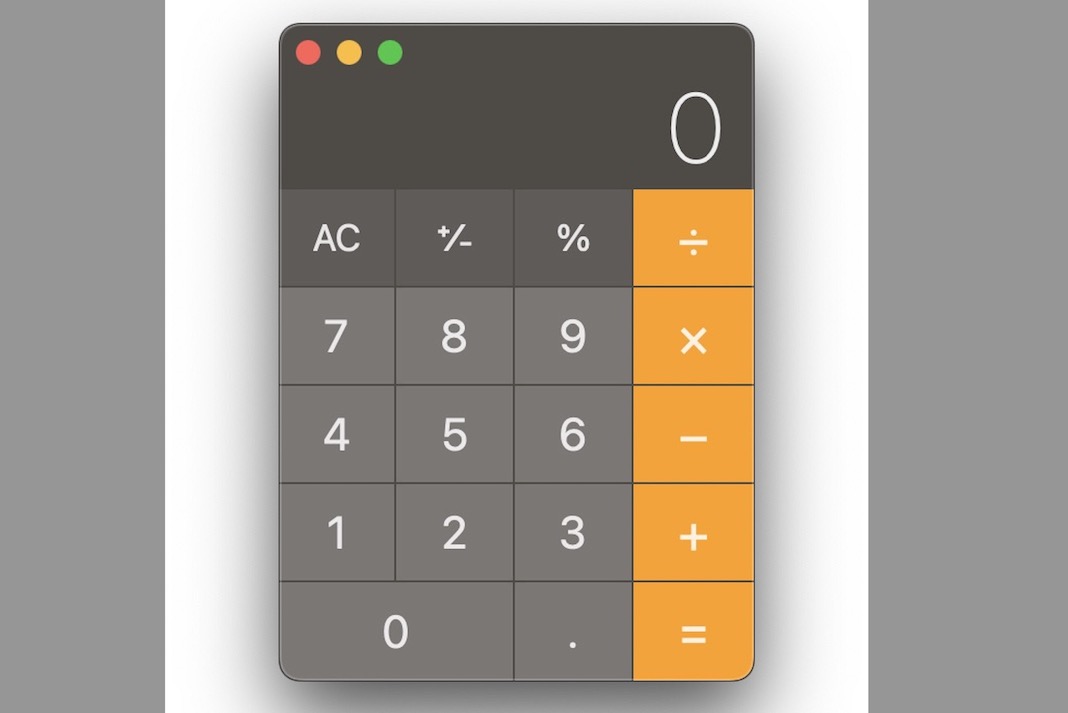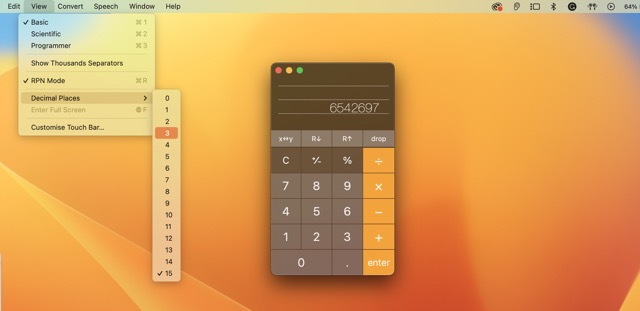A calculator app is crucial for anyone’s routine who is learning engineering, science, or programming. Although the built-in Calculator software on macOS is highly powerful, it cannot cover every use case.
Consider when you really need a calculator but can’t find one anywhere. You can quickly and easily solve mathematical problems by pulling out your iPhone, iTouch, or Mac. To solve mathematical difficulties, use this cool program.
A calculator can be used for simple arithmetic tasks as well as more complex ones. Such as those required by computer programmers. Simple computations are easy if your Mac is equipped with a Touch Bar.
Make a value exchange Enter the original value in Mac’s Calculator software, choose Convert from the menu bar, and then select the appropriate category, such as Temperature or Currency.
Enter the original value in Mac’s Calculator software, choose Convert from the menu bar, and then select the appropriate category, such as Temperature or Currency.
Please be aware that to acquire the most up-to-date exchange rate, you will need access to the Internet.
Simple equations can be entered in Reverse Polish Notation (RPN)
1. To switch to RPN mode in the Mac’s Calculator, select View > RPN Mode from the menu bar.
2. There are now four buttons on the Calculator’s display for working with the stack, and the Equal Sign key (=) has changed to the Enter key.
3. To take any action:
- Flip the two lowest digits of the stack around: Use the key that says “Exchange Registers” to get the relevant data.
- Change the position of the most recently input integer on the stack by one. Make use of the Roll Up/Down buttons.
#4. If you want to get rid of the lowest number in the stack, press the Drop key.
Substitute the Calculator
1. Select an option from the View menu to change the view in Mac’s Calculator software.
2. Start at ground zero and learn to do the bare minimum in math.
3. In science, you may use memory functions to do complex calculations using fractions, powers, roots, exponents, logarithms, trigonometry, and more.
4. Programmer: Calculate in binary, octal, decimal, and hexadecimal and carry out bitwise operations. See what ASCII and Unicode characters the current value corresponds to.
Insert decimal places
The accuracy of your calculations may suffer if you don’t report findings to the nearest decimal place. Because the programmer calculator discards any digits beyond the decimal point, this is a possibility. Here’s an example: (If you type 99/10=, you’ll get 9). As another possibility. The calculator may round the output if the number of decimal places is wrongly configured. You get 10 if the decimal places option is set to zero and you type 99/10.
Any of the following can be done in Mac’s Calculator software to improve accuracy:
1. Make use of View > Basic or View > Scientific.
2. Select View > Decimal Places to see the numbers with a decimal point (in any calculator).
Correct unexpected outcomes
It’s possible to perform any of the following tasks on Mac’s Calculator:
Simply re-run the computation, keeping in mind that the Calculator evaluates expressions in the standard sequence of operations. By way of illustration. Multiplication is performed before addition and subtraction.
To convert from the programmer calculator’s default format to octal, decimal, or hexadecimal, use the 8, 10, or 16 key, located just below the display, as appropriate. You might also use a scientific or simple calculator.
If you’re having doubts about the accuracy of your computation, you may utilize the Paper Tape (Window > Show Paper Tape) to double-check your work.
A comma can be displayed in place of a thousand separator by selecting View > Show Thousands of Separators.









































